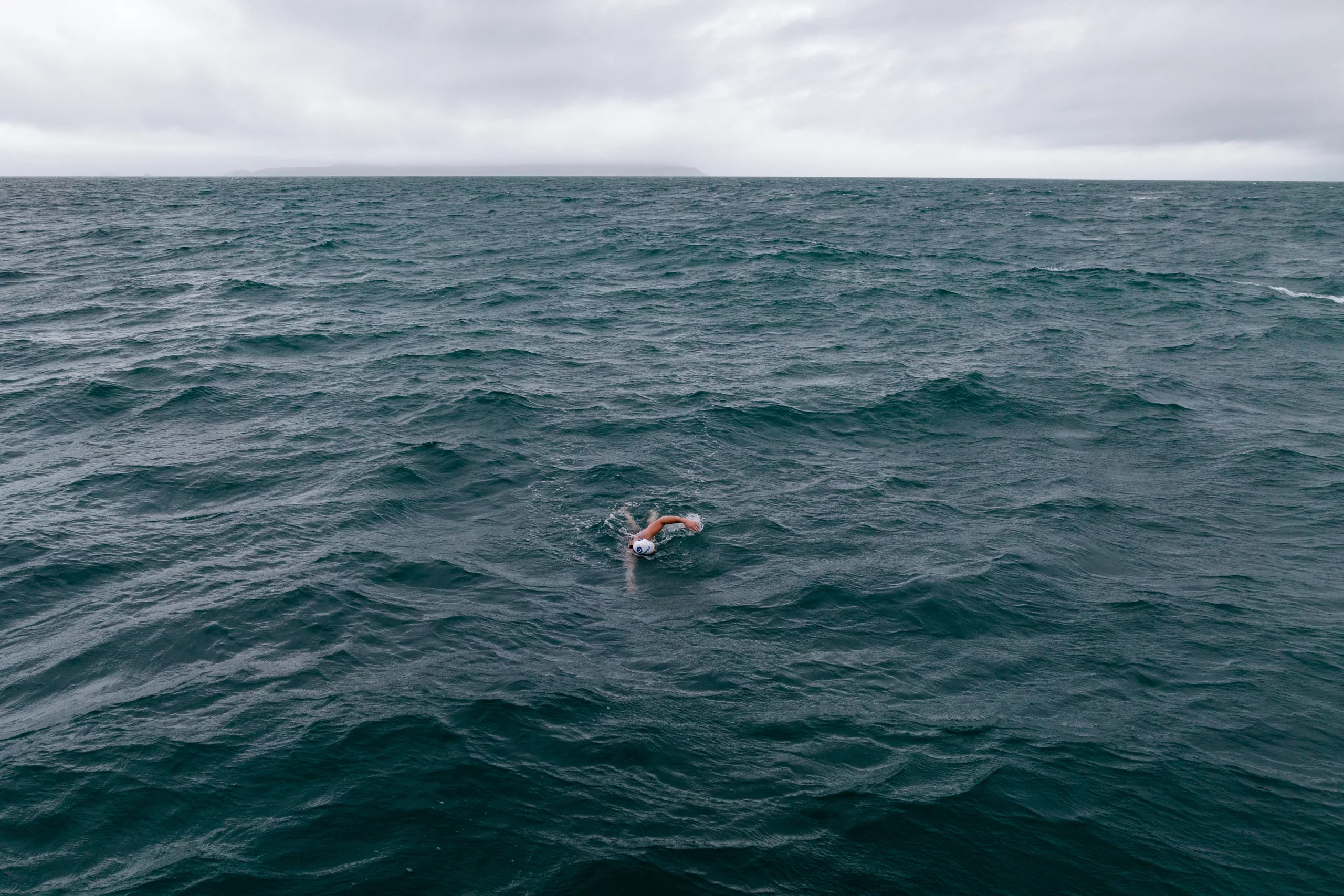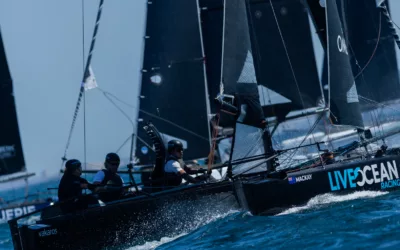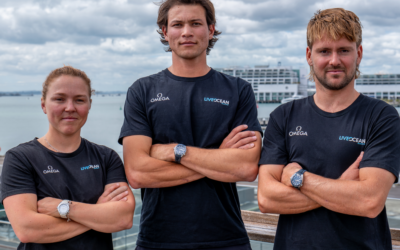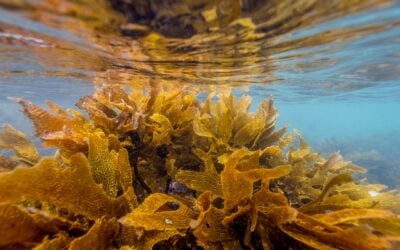
Jono Ridler recaps Swim4TheGulf in his own words…
Our window for Swim4TheGulf started on Tuesday April 25th, with dates chosen to overlap a neap tide. The wind, however, was not playing ball. A summer of high winds had continued well into autumn. I checked the wind forecast umpteen times daily, looking for the best opportunity and going half mad in the process. After several days, it seemed that the forecast models were potentially converging on a brief opening in the weather for an attempt starting on Tuesday May 2nd.
On Sunday morning, 48 hours before the swim, a call was convened with the two skippers of the main support craft to decide whether to move ahead and activate the 16-person crew. The window was tight. Wind was forecast to be favourable until the early hours of Wednesday May 3rd, reaching upwards of 20 knots as the second day progressed. Backing my ability, we decided to go ahead. I activated the crew to convene the following morning for our departure.
We set off in the morning to Great Barrier Island, heading into a stiff 20 knot headwind and 3-metre swells. The more experienced sailors of the crew hardly batted an eyelid in these rough conditions, while the swimmers of the support crew fared much worse. It was a relief to say the least to enter the calm waters of Karaka Bay about five hours later. After an incredible welcome by the local community, a fantastic dinner, and a very solid pre-swim briefing, members of the crew headed their separate ways for the night ahead.
On waking, we went about the final preparations for the swim ahead. The crew reviewed the feeding plan to dial it down for the days to come. I took a few moments to clear my head and visualize the swim. I was ready. We proceeded to the boat ramp which would act as the start point for the swim. After stripping off to my togs, Marcel rubbed me down with Sudocrem, for sun protection, and Sea Grease, a combination of petroleum jelly and lanolin, for chaffing. This was it. The start of the swim was imminent.
The lead observer counted down, and the hooter sounded. The swim had officially commenced.
I took the first stroke. The rolling hills of Karaka Bay channeled us out toward the open ocean, where we were greeted by the magnificent Spirit of New Zealand. The swell and wind became obvious as we exited the safe harbour of Karaka Bay, although neither was incredibly disruptive. The first 10 kilometres was ticked off in 2 hours and 40 minutes. I felt relaxed and strong.
Before long, we were off the northern tip of Little Barrier. The light was beginning to fade as day turned to dusk. It was here that the first major challenge was encountered. My gut became increasingly distressed. Meanwhile, my left tricep cramped and brought with it shoulder pain. After only 20 kilometres into the swim, this was not a good sign. The thought of abandoning the swim passed through my mind more than once. I binned those thoughts as soon as they came. I came back to the why – if we were going to have any chance of bringing about change, I had to be successful with this swim. I had to push through it.
The feeding plan quickly went from being very structured to somewhat ad-hoc to manage the gut distress. I had previously sighted meatballs on the boat and had an incredible craving for hot, savoury food. On request, the crew willingly obliged. On the next feed I was given several meatlballs to chew down. I cannot tell you how amazing they tasted.
We kept pushing forward through the night and, eventually, the gut distress retreated. I had some trepidation coming into the night – not because of what may be beneath, but rather my ability to remain alert for the duration. That fear turned out to be a non-event. The cool water combined with supplementary caffeine and ongoing movement meant that there was no tiredness experienced whatsoever. The night swimming was a beautiful, peaceful experience.
The hours passed and, with the passing of time, the arrival of dawn. Although it was a clouded, rain-shrouded daybreak, the first light brought a psychological boost.
It was with the break of day that the wind started to pick up. We still had 40 kilometres to go, and the swim was about to become very interesting.
The wind increased in ferocity with each hour that passed. I knew that the coming segment would be difficult – a 20-kilometre distance from the waters off Kawau Island to Tiritiri Matangi, swimming against the ebb tide. I chanced a look at Tiritiri, hoping to gather enough of a glance to give hope to the swimming efforts to come. This was a rookie error – being unable to sight the island sent me spiraling into a negative space. I returned to counting.
When we eventually reached Tiritiri channel, the tide shifted from an opposing ebb tide to a favourable flood tide. I knew that we needed to capitalize as much as possible on this portion, gaining the benefit of the wind and tide to guide us close to home. It was difficult to up the ante any further. Beyond the discomfort that my upper body was suffering, my legs were a source of considerable pain, shaking uncontrollably.
Dusk came and with it the falling light of the second night. As darkness grew, so did my hallucinations. At one point, I asked the support crew: “Are you guys real?”. The line between lucid and dream blurred, as exhaustion and sleep deprivation came home to roost.
We continued to push forward, with winds up to 30 knots and steep waves of 2 metres in height. Narrow Neck beach, our destination, seemed impossibly far away. I was willing to be flogged, but swimming into the now outgoing tide we were inching forward at a snail’s pace. As we reached the waters off Campbell’s Bay, a safety decision was made by the crew to head into the beach. The waves ahead were beyond dangerous. I was asked by the crew whether I was OK with this decision, to which I reportedly answered, “I don’t want to die tonight”.
I used the light of a house on the shorefront to guide me home. The waves were incredible. Campbell’s Bay is not a surf beach, but the conditions belied this. I was eventually able to put my feet on the sand below. My legs were jelly beneath me. I did my best impression of walking, somehow moving beyond the waterline to officially demarcate the end of the swim.
Relief and pride washed over me. 99 kilometres later, we had done it.



